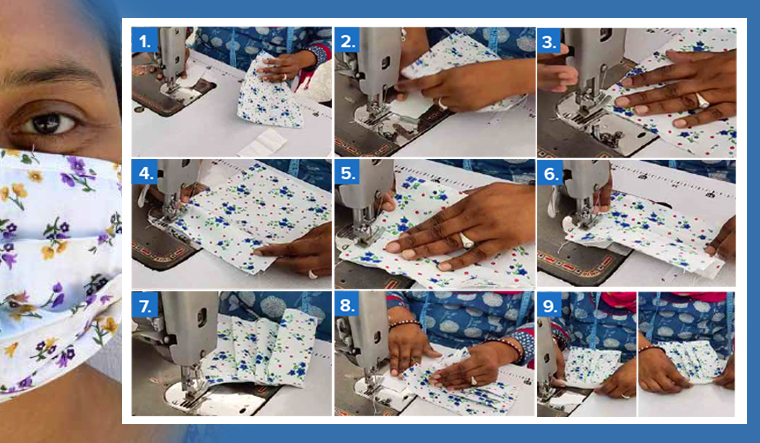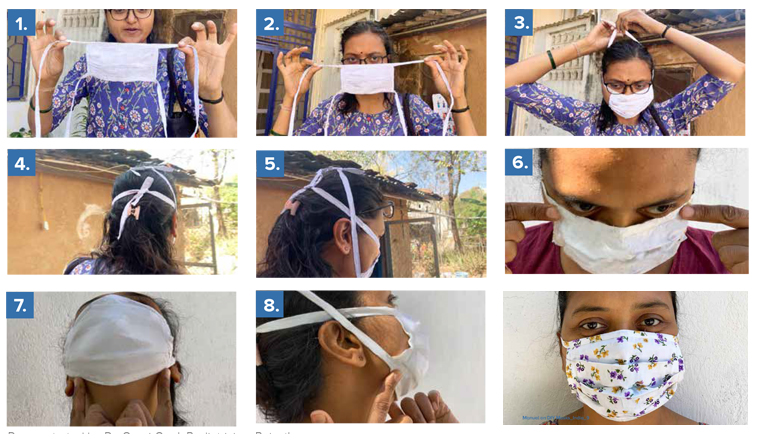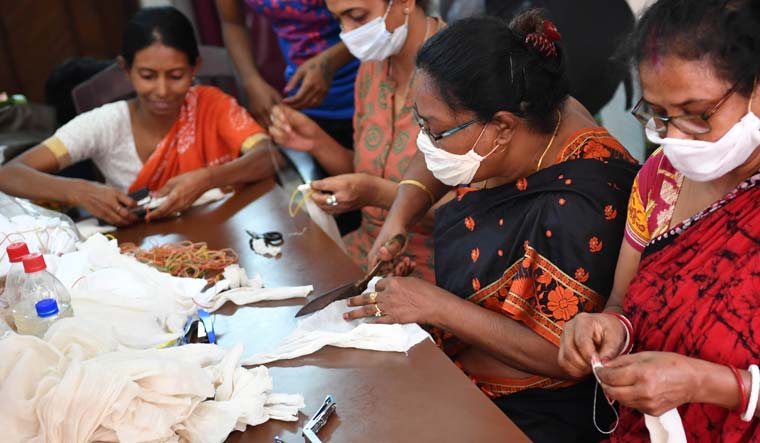The outbreak of coronavirus around the globe has led to a shortage of protective face masks. In light of such a shortage, the office of the Principal Scientific Adviser to the Central government has issued a detailed manual on homemade masks to curb the spread of the coronavirus.
Here’s how one can make a mask at home:
1. Take any used cotton cloth including an old cotton vest or t-shirt can be used to make this mask. Ensure that the fabric is washed well in boiling water for five minutes and dried properly before you make the mask. Adding salt to this water is recommended.
2. Cut cloth for the mask at '9-inch x 7 inch' for adults, and at '7-inch x 5 inch' for children.

3. Cut four strips for tying and piping from cloth: two pieces at 1.5”x 5” and two pieces at 1.5”x 40”.
4. Take the cut fabric, attach the 1.5x5” strip to be used as piping to the fabric on one end.
5. Create three downward facing pleats of approximately 1.5”. Turn the pleated cloth to the other side and repeat the steps. Once the pleats have been made, the height of the pleated cloth will be reduced from 9” to 5”.

6. Secure pleats with piping on both the sides. Then begin attaching the long 40” strips used for tying the mask to the top and bottom of the mask.
7. Now fold the 40” strips three times and stitch.
8. Ensure that the mask fits around your mouth and nose and there is no gap between your face and the mask.

When wearing the mask, the side facing you should show pleats facing downwards. You must never reverse the mask for reuse. Always thoroughly wash the mask after every use.
Masks like these are currently being used by community health workers of organizations in southern Rajasthan.
Clean the mask by boiling it in water at least for five minutes and then, dry it properly in the sun for five hours. Alternatively, you can also boil it in a pressure cooker for ten minutes, after adding salt to the water and air-dry it.
As per a report by the US National Institutes of Health, if 50 per cent of the population were to wear masks, only 50 per cent of the population would be infected by the virus. Once 80 per cent of the population wears a mask, the outbreak can be stopped immediately.
However, according to the WHO, “Masks are effective only when used in combination with frequent hand-cleaning with alcohol-based hand rub or soap and water. If you wear a mask, then you must know how to use it and dispose of it properly.”
Masks lower the chances of coronavirus entering the respiratory system through droplets still in the air from an infected person. An individual wearing a protective mask that has been thoroughly cleaned has reduced chances of inhaling the virus.
A report by the Business Insider quotes medical professionals as saying that homemade masks offer much less protection compared to surgical masks. They are, however, better than nothing. Such masks, according to the New England Journal of medicine, need to be cleaned thoroughly using a combination of approaches that use heat, UV light, water, soap and alcohol.


